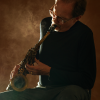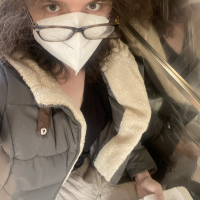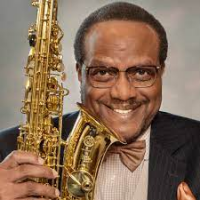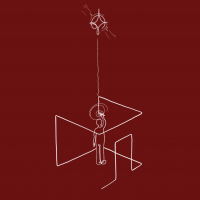Home » Jazz Musicians » Steve Lacy
Steve Lacy
Steve Lacy, one of the greatest soprano saxophonists of all time and a New England Conservatory faculty member since fall 2002, died Friday [June 4th, 2004] at New England Baptist Hospital. The jazz master who once defined his profession as “combination orator, singer, dancer, diplomat, poet, dialectician, mathematician, athlete, entertainer, educator, student, comedian, artist, seducer and general all around good fellow” was 69. He leaves his wife and collaborator, the Swiss singer Irene Aebi.
Born Steven Norman Lackritz in New York City, Lacy was the first avant garde jazz musician to make a specialty of the soprano saxophone--an instrument that had become almost completely neglected during the Bop era. Indeed, he is credited with single-handedly bringing the instrument back from obscurity into modern music of all types. He regularly received awards from DownBeat Magazine as the premier soprano saxophonist and in 1992 received a MacArthur Foundation “genius” grant. In 2002, he was made a Commandeur de l'Ordre des Arts et des Lettres by the French government. A prolific recording artist, Lacy is represented on many labels including Universal, Senators, RCA, Verve, Label Bleu, Greats of Jazz, EMI, CBS/Columbia, and Denon.
Throughout his career, Lacy was widely admired for the beauty and purity of his tone, for his incisive melodic sense, for keeping his music uncompromising and fresh, and for his eagerness to play with a wide variety of musicians while retaining long-term musical relationships. For example, since 1998, he performed often with Panamanian pianist and NEC faculty member Danilo Perez, but he also played regularly with Mal Waldron, a pianist he had worked with since the fifties. He was esteemed for his productivity, and for the consistently high quality of his art. As a teacher, a role he took on in the last two years of his life, he was revered for his intense focus and generosity.
During the latter part of his career, Lacy made his home in Paris for 33 years, but returned to the United States in 2002 to begin his first teaching job at NEC. He was prominently featured in the concerts celebrating the centennial of NEC's Jordan Hall in October 2003, kicking off the festivities in a Best of Jazz performance that featured other Conservatory jazz greats like Ran Blake, George Russell, Bob Brookmeyer, and alumnus Cecil Taylor.
Lacy got his start as a sideman in the early fifties playing in Manhattan's Dixieland revival scene. He also worked with some Duke Ellington players including cornetist Rex Stewart who christened him “Lacy.” Although he initially doubled on clarinet and soprano sax, he soon dropped the former instrument and found his distinctive voice with the saxophone. It was the NEC-trained Cecil Taylor who set Lacy on a new course and introduced him to Thelonious Monk--who, along with Duke Ellington, would remain the most important influence in his life. “Playing with Cecil Taylor immediately put me into the offensive mode” (of music- making), Lacy recalled in his book Findings: My Experience with the Soprano Saxophone. “This was the avant-tout garde; we were an attack quartet (sometimes quintet or trio), playing original, dangerously threatening music that most people were offended by….”
Read moreTags
Roberto Ottaviano su "Live Lugano 1984" di Steve Lacy

by Roberto Ottaviano
Steve Lacy Three Live Lugano 1984 -First Visit ezz-thetics 2025 In attesa che qualcuno tiri fuori dal cassetto una registrazione inedita del Dicembre 1983 di Lacy con Bill Frisell e Paul Motian sulle musiche per “Il Padrino" di Nino Rota, prodotta da Hal Willner per la Deep Creek, becchiamoci questa interessante pubblicazione di un altro trio guidato dal saxofonista newyorchese e che vede insieme a lui il chitarrista nativo di Denver Barry Wedgle (che Lacy ...
Continue ReadingSteve Lacy Three: Live Lugano 1984

by John Eyles
Over two decades after the untimely death from liver cancer of soprano saxophonist par excellence Steve Lacy, it seems remarkable that Live Lugano 1984 has been released for the very first time by First Visit, over forty years after it was recorded live by Mario Conforti in Lugano, Switzerland, on September 24, 1984. According to Executive Producer Werner X. Uehlinger, Lacy sent him a cassette to listen to and evaluate for release. On that cassette, Lacy had written ...
Continue ReadingMal Waldron, Steve Lacy: The Mighty Warriors

by Vincenzo Roggero
Alcune note per inquadrare il contesto di questa registrazione: il concerto eseguito ad Anversa il 30 settembre 1995, per il settantesimo compleanno di Mal Waldron, non era mai stato pubblicato prima; le esecuzioni dell'intero set sono inedite; l'audio rimasterizzato è stato trasferito dalle bobine originali con eccellenti risultati; l'elegante e ricco libretto contiene testimonianze di Reggie Workman, Andrew Cyrille, interviste a Jane Bunnett, David Virelles, Dave Liebman, Vijay Iyer, Evan Parker, Hiromi Waldron, vedova di Mal, più la presenza di ...
Continue ReadingMal Waldron / Steve Lacy: The Mighty Warriors

by Karl Ackermann
Mal Waldron and Steve Lacy first played together in 1958 at the Bowery neighborhood's Five Spot. Their association was long, if not necessarily prolific on record. Though their personal styles contrasted, they frequently existed in a parallel universe. Both expatriates lived in Paris, were predisposed to the avant-garde, and shared a deep appreciation for Thelonious Monk's music. They performed and recorded until 2002 when Waldron died. Barcelona-based Elemental Music Records acquired the previously unreleased recordings of Lacy and Waldron from ...
Continue ReadingMal Waldron - Steve Lacy: The Mighty Warriors

by Dan McClenaghan
Producer/jazz detective Zev Feldman is still at it, ferreting out unreleased recordings from jazz giants of the past and releasing them with buffed-up sound quality and first-rate packaging. Long lost recordings from pianists Bill Evans, Thelonious Monk, Art Tatum and Ahmad Jamal have seen the light of the twenty-first century, thanks to Feldman, as has newly discovered music from trumpeter Chet Baker. Now it is pianist Mal Waldron (1925 -2002) and soprano saxophonist Steve Lacy's (1934 -2004) turn, with The ...
Continue ReadingSteve Arguelles: Here

by Vincenzo Roggero
In che modo ci si approccia ad una registrazione di solo batteria, se sei un batterista che non crede negli assoli di batteria? Su questa domanda le note di copertina argomentano in modo brillante, lucido, esaustivo. Il musicista in questione è Steve Arguelles veterano della più vivace scena britannica, membro fondatore dei fondamentali Loose Tubes e Human Chain, collaboratore di musicisti come Lee Konitz, Kenny Wheeler, Hugh Masekela, Chris McGregor. La registrazione avviene nella chiesa luterana di ...
Continue ReadingSteve Lacy: The Long Distance Runner

by David Liebman
The following is an excerpt from “Threads: Evocations & Echos" of Steve Lacy (Unfinished) by Guillaume Tarche (Editions Lenka lente, 2021). I can't say that I knew Steve personally that well. We did one duo concert in Italy which was interesting to say the least, a story in itself. But of course, being the king of the soprano saxophone meant I had to be familiar with his music and artistic process. He predates Shorter and Trane on soprano... ...
Continue ReadingJazz Musician of the Day: Steve Lacy

Source:
Michael Ricci
All About Jazz is celebrating Steve Lacy's birthday today!
Steve Lacy, one of the greatest soprano saxophonists of all time and a New England Conservatory faculty member since fall 2002, died Friday [June 4th, 2004] at New England Baptist Hospital. The jazz master who once defined his profession as “combination orator, singer, dancer, diplomat, poet, dialectician, mathematician, athlete, entertainer, educator, student, comedian, artist, seducer and general all around good fellow” was 69. He leaves his wife and collaborator, the Swiss ...
read more
Jazz Musician of the Day: Steve Lacy

Source:
Michael Ricci
All About Jazz is celebrating Steve Lacy's birthday today!
Steve Lacy, one of the greatest soprano saxophonists of all time and a New England Conservatory faculty member since fall 2002, died Friday [June 4th, 2004] at New England Baptist Hospital. The jazz master who once defined his profession as “combination orator, singer, dancer, diplomat, poet, dialectician, mathematician, athlete, entertainer, educator, student, comedian, artist, seducer and general all around good fellow” was 69. He leaves his wife and collaborator, the Swiss ...
read more
Jazz Musician of the Day: Steve Lacy

Source:
Michael Ricci
All About Jazz is celebrating Steve Lacy's birthday today!
Steve Lacy, one of the greatest soprano saxophonists of all time and a New England Conservatory faculty member since fall 2002, died Friday [June 4th, 2004] at New England Baptist Hospital. The jazz master who once defined his profession as “combination orator, singer, dancer, diplomat, poet, dialectician, mathematician, athlete, entertainer, educator, student, comedian, artist, seducer and general all around good fellow” was 69. He leaves his wife and collaborator, the Swiss ...
read more
Jazz Musician of the Day: Steve Lacy

Source:
Michael Ricci
All About Jazz is celebrating Steve Lacy's birthday today!
Steve Lacy, one of the greatest soprano saxophonists of all time and a New England Conservatory faculty member since fall 2002, died Friday [June 4th, 2004] at New England Baptist Hospital. The jazz master who once defined his profession as “combination orator, singer, dancer, diplomat, poet, dialectician, mathematician, athlete, entertainer, educator, student, comedian, artist, seducer and general all around good fellow” was 69. He leaves his wife and collaborator, the Swiss ...
read more
Jazz Musician of the Day: Steve Lacy

Source:
Michael Ricci
All About Jazz is celebrating Steve Lacy's birthday today!
Steve Lacy, one of the greatest soprano saxophonists of all time and a New England Conservatory faculty member since fall 2002, died Friday [June 4th, 2004] at New England Baptist Hospital. The jazz master who once defined his profession as “combination orator, singer, dancer, diplomat, poet, dialectician, mathematician, athlete, entertainer, educator, student, comedian, artist, seducer and general all around good fellow” was 69... Read more.
Place our Musician of the Day ...
read more
Jazz Musician of the Day: Steve Lacy

Source:
Michael Ricci
All About Jazz is celebrating Steve Lacy's birthday today!
Steve Lacy, one of the greatest soprano saxophonists of all time and a New England Conservatory faculty member since fall 2002, died Friday [June 4th, 2004] at New England Baptist Hospital. The jazz master who once defined his profession as “combination orator, singer, dancer, diplomat, poet, dialectician, mathematician, athlete, entertainer, educator, student, comedian, artist, seducer and general all around good fellow” was 69... Read more.
Place our Musician of the Day ...
read more
Steve Lacy and Whitey Mitchell

Source:
JazzWax by Marc Myers
Mention the soprano saxophone, and most people think first of Sidney Bechet, Lucky Thompson, Pony Poindexter, John Coltrane and Dave Liebman. But in the 1950s and beyond, the artist who did more to demonstrate the instrument's versatility across multiple jazz styles was Steve Lacy. He began in the early 1950s as a New Orleans-style player, using the instrument as a clarinet. Then he shifted to progressive jazz in the mid-1950s before becoming an early pioneer of avant-garde jazz with Cecil ...
read more
Jazz Musician of the Day: Steve Lacy

Source:
Michael Ricci
All About Jazz is celebrating Steve Lacy's birthday today!
Steve Lacy, one of the greatest soprano saxophonists of all time and a New England Conservatory faculty member since fall 2002, died Friday [June 4th, 2004] at New England Baptist Hospital. The jazz master who once defined his profession as “combination orator, singer, dancer, diplomat, poet, dialectician, mathematician, athlete, entertainer, educator, student, comedian, artist, seducer and general all around good fellow” was 69... Read more.
Place our Musician of the Day ...
read more
Jazz Musician of the Day: Steve Lacy

Source:
Michael Ricci
All About Jazz is celebrating Steve Lacy's birthday today!
Steve Lacy, one of the greatest soprano saxophonists of all time and a New England Conservatory faculty member since fall 2002, died Friday [June 4th, 2004] at New England Baptist Hospital. The jazz master who once defined his profession as “combination orator, singer, dancer, diplomat, poet, dialectician, mathematician, athlete, entertainer, educator, student, comedian, artist, seducer and general all around good fellow” was 69... Read more.
Place our Musician of the Day ...
read more
Jazz Musician of the Day: Steve Lacy

Source:
Michael Ricci
All About Jazz is celebrating Steve Lacy's birthday today! Steve Lacy, one of the greatest soprano saxophonists of all time and a New England Conservatory faculty member since fall 2002, died Friday [June 4th, 2004] at New England Baptist Hospital. The jazz master who once defined his profession as “combination orator, singer, dancer, diplomat, poet, dialectician, mathematician, athlete, entertainer, educator, student, comedian, artist, seducer and general all around good fellow” was 69... Read more. Place our Musician of the Day ...
read more
































































